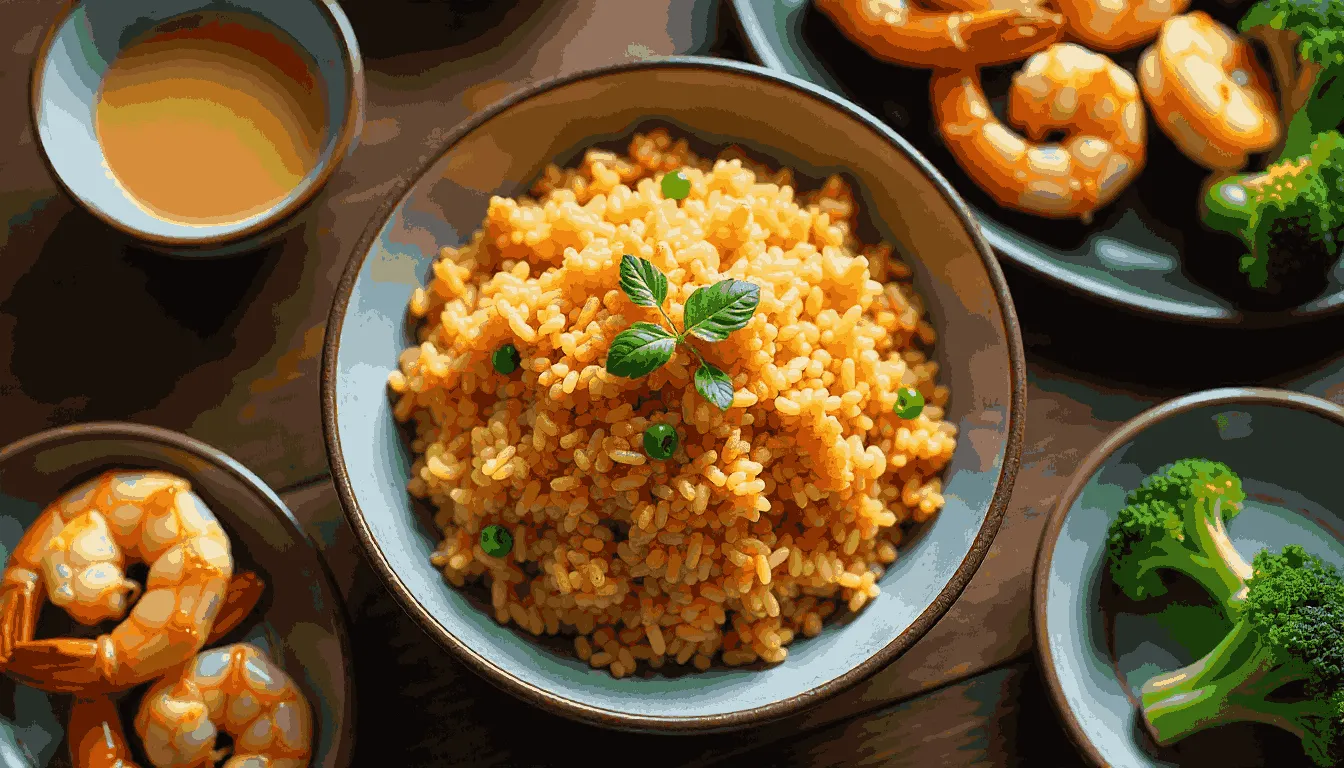Stir-Fried Noodles and Vegetables: Your Canvas for a Quick, Flavorful Feast
The sizzle is the first sign of something wonderful. It’s the sound of a hot pan meeting fresh vegetables, a promise of a meal that’s both lightning-fast and deeply satisfying. A great vegetable noodle stir fry is more than just dinner; it’s a vibrant, customizable masterpiece you can create in minutes. It’s the answer to a busy evening, a fridge full of leftover veggies, and a craving for something truly delicious.
This dish celebrates texture: the soft chew of noodles, the crisp snap of a fresh bell pepper, and the tender bite of broccoli. Best of all, it’s incredibly forgiving. This guide will walk you through the simple techniques to avoid soggy noodles and limp vegetables. Let’s turn simple ingredients into an exciting vegetable and noodle stir fry that will become a regular in your kitchen rotation.
The Secret to a Perfect Stir Fry Every Single Time
Many home cooks end up with a watery, bland stir-fry. The problem usually isn’t the ingredients, but the method. The key lies in preparation and heat management.
A successful stir-fry happens quickly. Therefore, you need everything prepped and within arm’s reach before you even turn on the stove. This “mise en place” is non-negotiable. It allows you to focus on cooking each component perfectly without overcooking anything.
Furthermore, high heat is your best friend. It sears the vegetables, locking in their color and crunch, while also creating that classic, smoky “wok hei” flavor. We’ll use a simple, powerful sauce that coats everything in a glossy, savory-sweet glaze. This approach ensures your stir-fried noodles and vegetables are a burst of flavor and texture, not a steam-filled disappointment.
Gathering Your Ingredients: Flexibility is Key
The beauty of this dish is its versatility. Use this list as a template and feel free to swap based on what you have.
The Noodles & Aromatics
- Noodles: 8 ounces (about 225g) of your preferred type. Dried lo mein, rice noodles, or even spaghetti work perfectly.
- Aromatics: 3 cloves garlic, minced, and 1 tablespoon fresh ginger, grated.
- Heat: 1-2 teaspoons of chili paste or sriracha (optional, for spice).
The Vegetables (Choose Your Favorites)
- Crunchy: 1 bell pepper (any color), sliced thin. 1 medium carrot, cut into matchsticks.
- Quick-Cooking: 1 cup of snap peas or snow peas. 2-3 green onions, sliced.
- Hearty: 1 cup of broccoli or cauliflower florets.
- Other Ideas: Mushrooms, cabbage, baby corn, water chestnuts.
For the Simple Stir Fry Sauce
- Savory: 3 tablespoons soy sauce (or tamari for gluten-free).
- Tangy: 1 tablespoon rice vinegar.
- Sweet: 1 tablespoon honey or maple syrup.
- Richness: 1 tablespoon toasted sesame oil.
- Thickener: 1 teaspoon cornstarch mixed with 2 tablespoons of water.
How to Make Your Vegetable Noodle Stir Fry: A Step-by-Step Guide
Follow these steps in order for the best results. The process is fast, so having everything ready is the real secret.
Step 1: Prepare the Noodles and Sauce
First, cook your noodles according to the package directions, but stop just short of al dente. They will finish cooking in the pan. Drain them and rinse with cold water to stop the cooking process. Toss them with a tiny bit of oil to prevent sticking. Next, in a small bowl, whisk together all the sauce ingredients: soy sauce, rice vinegar, honey, and sesame oil. In a separate tiny bowl, mix the cornstarch and water to create a “slurry.” This will thicken your sauce beautifully.
Step 2: Chop and Organize Your Vegetables
Now, chop all your vegetables into uniform, bite-sized pieces. This ensures they cook evenly. Place them next to your stove in the order you’ll cook them: harder vegetables (like carrots and broccoli) first, softer ones (like bell peppers and snap peas) later. Have your minced garlic and grated ginger ready in a small pile.
Step 3: The Stir-Frying Process
Place a large wok or a wide, heavy-bottomed skillet over high heat. Let it get very hot. Add 1-2 tablespoons of a high-heat oil like avocado or peanut oil. When the oil shimmers, it’s ready. Start by adding the harder vegetables (carrots, broccoli). Stir-fry for 2-3 minutes until they start to brighten and soften slightly. Then, add the softer vegetables (bell peppers, snap peas) and stir-fry for another 1-2 minutes.
Step 4: Bringing It All Together
Push the vegetables to one side of the pan. In the empty space, add a tiny bit more oil and toss in the garlic and ginger. They will become fragrant in about 30 seconds—be careful not to burn them. Now, pour in the sauce mixture. It will bubble and simmer immediately. Give the cornstarch slurry a final stir and add it to the pan, stirring constantly. The sauce will thicken into a glossy glaze within a minute.
Step 5: The Final Toss and Serve
Add the cooked noodles and the green onions to the pan. Using tongs or two spatulas, toss everything together until the noodles and vegetables are evenly coated in the delicious sauce. Let it heat through for another minute. Your vegetable stir fry and noodles is ready!
Pro Tips for an Unbeatable Stir Fry
- Dry Your Noodles: After rinsing, pat the noodles dry with a paper towel. Wet noodles will steam the vegetables instead of frying.
- Don’t Crowd the Pan: If your pan is too small, cook the vegetables in two batches. Overcrowding creates steam, which leads to soggy results.
- Taste and Adjust: Before serving, taste your stir fry. You might want an extra splash of soy sauce for saltiness or a squeeze of lime for tang.
- Add Protein: For a heartier meal, add cubed tofu, tempeh, or thinly sliced chicken breast. Cook the protein first, then set it aside and add it back at the end.
The Joy of a Simple, Customizable Meal
This recipe for stir-fried noodles and vegetables is more than a set of instructions; it’s a foundation. It’s an invitation to play with flavors, to clean out the produce drawer, and to put a healthy, satisfying meal on the table with minimal fuss. The process is almost as rewarding as the result: the rhythmic chopping, the intense sizzle, the incredible aroma that fills your kitchen. It’s a reminder that the best cooking is often the simplest. We hope this becomes your go-to template for a quick, delicious dinner. If you love the process of building flavors in a pan, you’ll find more inspiration for turning simple ingredients into something special over at DodewRecipes.
All images in this post are generated by Freepik.










Leave a Reply